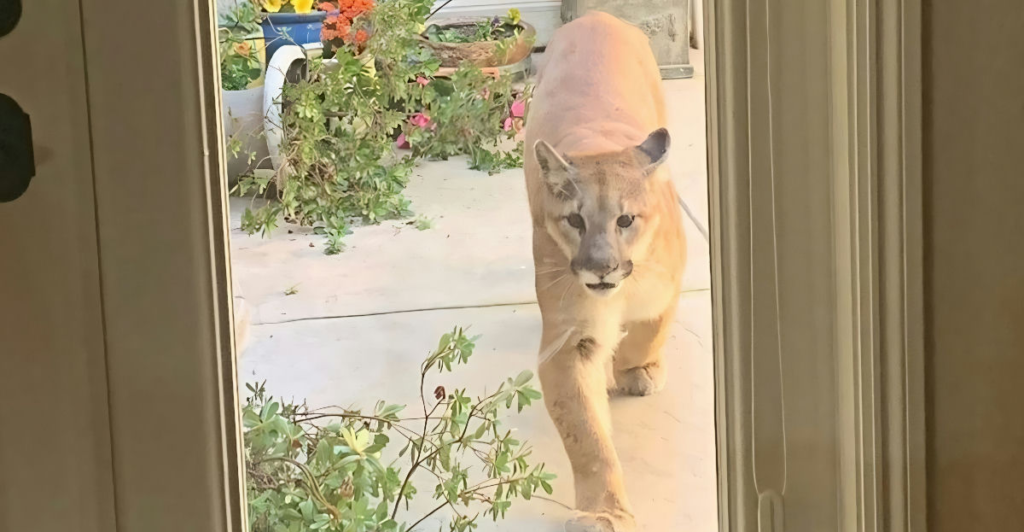
Mountain lions, or cougars or pumas, are solitary and elusive predators native to the Americas. They primarily inhabit mountainous regions, forests, and deserts, but urban expansion has increased sightings in residential areas.
These cats are most active during dawn and dusk, hunting deer and other mammals. While attacks on humans are rare, mountain lions may venture into yards for food or shelter. Understanding their behavior is crucial for ensuring safety and coexisting peacefully.
Immediate Actions During a Sighting

If you encounter a mountain lion in your yard, remain calm and avoid sudden movements. Do not approach the animal; instead, give it space to leave. Maintain eye contact and stand upright to appear more prominent.
Slowly back away, ensuring the lion has a clear escape route. Never run or turn your back; this may trigger a predatory response. If the lion displays aggressive behavior, raise your arms, speak firmly, and throw objects if necessary to deter it.
Securing Pets and Livestock

Mountain lions may perceive pets and livestock as prey. To protect them, keep pets indoors, especially during dawn and dusk.
Consider using enclosures with roofs and sturdy fencing at least 12 feet high for livestock, as mountain lions can leap over lower barriers. Motion-sensor lights around these areas can also deter predators.
Removing Attractants from Your Property

To make your yard less appealing to mountain lions, eliminate potential food sources and hiding spots. Avoid feeding deer or other wildlife, as this can attract predators. Secure garbage bins and remove pet food from outdoor areas.
Trim dense vegetation and remove brush piles where mountain lions could hide. Cover crawl spaces under decks or sheds to prevent animals from denning.
Installing Deterrent Measures

Implementing deterrents can reduce the likelihood of mountain lion visits. Install motion-activated lights and sprinklers to startle and discourage wildlife.
Auditory deterrents, such as alarms or radios, can also be effective. Ensure fencing is difficult to climb, and consider adding an outward-facing overhang to prevent animals from scaling it.
Educating Your Household

Ensure all family members, including children, understand how to respond to a mountain lion encounter. Teach them to stay calm, avoid running, and make themselves appear more prominent.
Emphasize the importance of backing away slowly while maintaining eye contact. Regularly discuss and practice these safety measures to ensure preparedness.
Reporting Sightings to Authorities

If a mountain lion is spotted in your yard, report the sighting to local wildlife authorities or animal control. Provide details such as the animal’s time, location, and behavior.
This information assists authorities in monitoring mountain lion activity and implementing necessary measures to ensure public safety.
Understanding Legal Protections and Responsibilities

Mountain lions are protected under various state and federal laws. It’s essential to familiarize yourself with local regulations regarding wildlife interactions.
In many areas, harming or killing a mountain lion without proper authorization is illegal. Always prioritize non-lethal deterrent methods and consult authorities for guidance.
Preparing for Rare Aggressive Encounters

While rare, if a mountain lion behaves aggressively or attacks, fight back using any available objects. Aim for the animal’s head and eyes. People have successfully fended mountain lions using rocks, sticks, or bare hands.
Protect your neck and throat, and try to remain standing. Such incidents are uncommon, but being prepared can save lives.
Promoting Community Awareness

Engage with your community to raise awareness about mountain lion safety. Share information on recent sightings and preventive measures.
Collaborate on neighborhood initiatives like installing communal deterrents or organizing educational workshops. A collective approach enhances safety and fosters coexistence with local wildlife.
Explore more of our trending stories and hit Follow to keep them coming to your feed!

Don’t miss out on more stories like this! Hit the Follow button at the top of this article to stay updated with the latest news. Share your thoughts in the comments—we’d love to hear from you!







